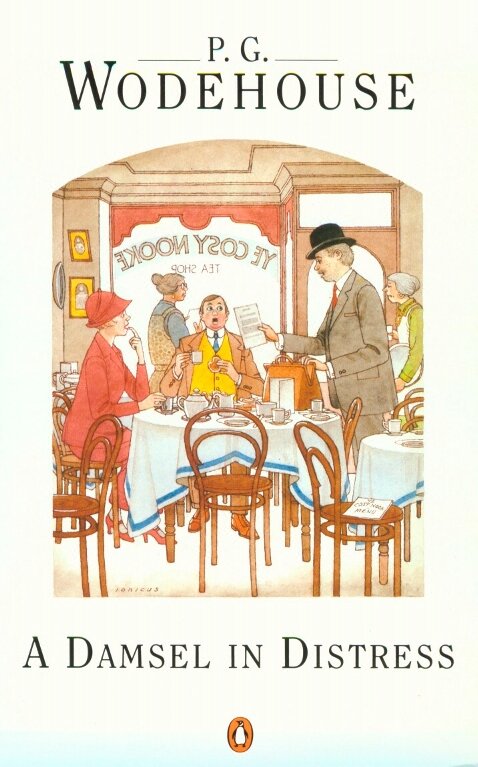Inasmuch as the scene of this story is that historic pile, Belpher Castle, in the county of Hampshire, it would be an agreeable task to open it with a leisurely description of the place, followed by some notes on the history of the Earls of Marshmoreton, who have owned it since the fifteenth century. Unfortunately, in these days of rush and hurry, a novelist works at a disadvantage. He must leap into the middle of his tale with as little delay as he would employ in boarding a moving tramcar. He must get off the mark with the smooth swiftness of a jack-rabbit surprised while lunching. Otherwise, people throw him aside and go out to picture palaces.
It isn't exactly new, of course - long before picture palaces, Horace says of the ideal epic poet:
Nor does he begin the Trojan War from the egg,
but always he hurries to the action, and snatches the listener into the middle of things ...
(Wikipedia)
I sat in on one of Alan Bissett's creative writing sessions once. He had us writing an opening to a story. When we had finished, he suggested we delete the first seven sentences and that THAT would be where the story really began. We read out our original opening sentences, and the new opening, and very frequently, the new one was, indeed, streets better. (I tried this with a group of young writers. The first lad I asked to read out, looked at me sadly and said, "I only wrote seven sentences.")
At one stage, I used to start my own creative writing sessions with the words, "Every good story begins with what the main character had for breakfast." I was, of course, hoping for a chorus of "No it doesn't - that's boring - good stories start with something exciting!" What I tended to get was a chorus of blank stares. I stopped using that particular opener.
(image: Abe Books)
(image: The Project Gutenberg Project)
(image: Penguin Books)
But, in this time of rush and hurry, have we got stuck with in medias res as the only way? When was the last time you wrote a book that didn't open like a rabbit surprised? When was the last time you read one?
Are we missing out? Tell me what you think ...
Joan Lennon's website.
Joan Lennon's blog.





7 comments:
I love the first few paragraphs of Birdsong, and often use it as an example of a slow opening which works well. Its a straightforward description of a sleepy town in summer: weather, light, river, houses. It's only when you reach the end that you're told the name of the river - the Somme. Gave me shivers first time I read it.
I believe the opening of Lord of the Flies started life as its second chapter, until an editor suggested cutting chapter one completely!
I'm deeply suspicious of all rules! For instance, am just reading The Book Thief, where the narrator keeps telling us things that are going to happen - important things, like the fate of a main character. Somehow, it works...
I like a bit of drama, personally. I LIKE 'It was a dark and stormy night' ... :-)
But point taken!
I love a slow opening, PROVIDED it's also gripping in its own way. A big turn-off for me is sudden action with little exposition at all. Incident for its own sake is not interesting. You need some idea of who these people are, who are experiencing these events.
In a way it's only lesser writers who have to open with a bang. The best can write about a shopping list and make it gripping.
Thanks for comments - and if you haven't read A Damsel in Distress, I found it in a second-hand bookshop and am loving it!
Just about any one of the Diskworld novels starts with a long-shot gradually zooming in on the action. They tend to end with a long-shot too. But then that setting is a fascinating one in its own right.
Post a Comment